No matter where you live, dry air is bound to be a problem for at least part of the year. This makes the air in your home uncomfortable for anyone. However, if you suffer from allergies, it is more than just uncomfortable: it can be unbearable. To make your home as comfortable as possible for you, you should purchase the best humidifier for allergies.
Why Does the Air in Our Homes Become Dry?
There are two common causes for dry air in your home: dry air outside your home and the use of an HVAC system inside your home. This can be something you deal with all year because you are living in a desert climate or a problem that only pops up during the colder months of the year when you turn the heat on. To help you understand, let’s look at the science behind this.
Air molecules behave like most other types of molecules, expanding when hot and contracting when cool. Because they change size depending on temperature, they also change their ability to hold water. As such, hot air can hold more water than cold air.
So, why is desert air and air heated in the home dry? Desert air is dry simply because the area lacks moisture for the air to pull from. When this occurs with the air in your home after it is heated, it gets a little more complicated.
Your heating system works by pulling in air from the outside, heating it, then returning the air back to the outside. When you are heating your home, it is because it is cold, so the air your system is pulling in is cold. As the system heats the air, the air molecules expand, but cannot pull in the amount of moisture needed to fill the molecules. The longer your heat runs, the more cycles you go through, significantly decreasing the moisture in the air.
Why Is Dry Air Bad for Allergy Sufferers?
As you can imagine, breathing in dry air is bad for everyone, but you might wonder why it is so bad for allergy sufferers in particular. Essentially, it comes down to the same effects that everyone else experiences being amplified by your allergies. Below are some of the ways dry air can harm those with allergies.
How to Tell if Your Air Is Dry
Now that you know how dry air can impact your allergies, you are probably wondering how you can tell if your air is dry. The best way to do this is to get a humidistat, which is a tool that measures the humidity level in your home. However, there are other signs you can look for that do not require the use of any special tools. If you notice any of the below, low humidity could be the culprit.
Now, dry air is not the only thing that can cause these symptoms, but it is one possible cause. As such, you should consider it a possibility if you experience any of the symptoms above. In some cases, these signs can actually be due to too much humidity, so if possible, measure the humidity level before taking action.
Types of Humidifiers
There are many ways you can add humidity to your home without using a humidifier; however, the most effective way to add moisture to your air is with one. Purchasing the right one for your home means understanding the different types on the market. There are two main categories to look at: whole-house humidifiers and single-room humidifiers.
Whole-house humidifiers are those that are integrated with the HVAC system and deliver humidified air to the entire home—or at least to any room with a register. Different models can handle different sizes of houses. Single-room humidifiers are stand-alone humidifiers that generally can only deliver moisture to the air in a single room. Once again, different models can handle different spaces. Within these categories, there are different types of humidifiers.
Whole-House Humidifiers
Single-Room Humidifiers
Ultimately, the right choice for you will come down to several factors. Whole house furnace humidifiers allow you to take care of an entire house with a single unit and require less upkeep from you than a single-room humidifier will. While it might seem like a whole-house humidifier is the way to go, it isn’t right in every situation.
If you are renting your home, you may not be allowed to install a whole-house humidifier. If you do not want a drum-style humidifier, you will need air supply lines and a water supply line that are close together. Also, not everyone has an integrated HVAC system. If you don’t, a whole-house humidifier simply isn’t an option. So, depending on your circumstances, it is possible that a single-room humidifier is the right choice for you.
Features to Look For
Once you have a good idea of the type of humidifier that will work best for your home, you need to know what features to look for. These features will help you determine which models are better suited to your home. In truth, there are many variables to consider, but we are only going to look at those we feel have the biggest impact on your purchase.
- Square Feet Covered: The goal with a humidifier is to completely cover a given space; with a whole-house humidifier, this is the home; with a single-room humidifier, this is a given room. Open spaces and high ceilings may mean you need a humidifier that covers more than your exact square footage.
- Ease of Use: The last thing you want is a machine that is too difficult to operate. You want a unit that has enough features that you get what you want out of it, but few enough that it isn’t like flying a plane every time you use it.
- Maintenance Level: Different machines have different maintenance needs. Single-room humidifiers need daily maintenance, while whole-house humidifiers may need it once a month or once a year—or anywhere in between.
Top 10 Best Humidifiers for Allergies On The Market
Honeywell GermFree HCM-350
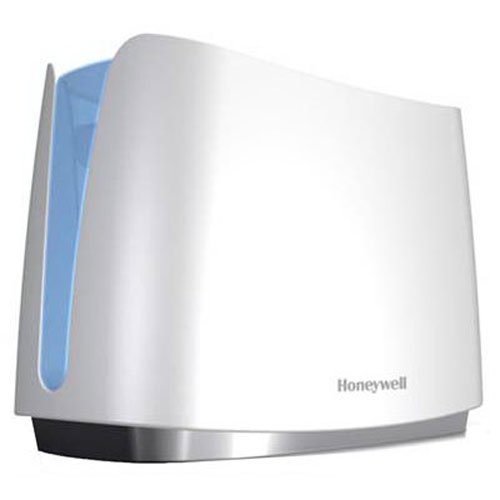
When it comes to allergies, the best thing you can do is get your air as clean and moisturized as possible. Usually this means purchasing two different machines, but this humidifier from Honeywell does both. Since it removes 99% of bacteria, fungus, mold, and other airborne irritants, it reduces the amount of allergic reactions you suffer.
To make cleaning easy, the parts that must be cleaned are dishwasher safe. It can run for 24 hours on a single tank, reducing the daily maintenance or you. 360It is also very quiet, making it ideal for anywhere noise is a concern.
Optimus U-31002 Cool Mist Ultrasonic Humidifier

A major concern with single-room humidifiers is how often you change the tank. This model from Optimus has one of the largest tanks for a non-console single-room humidifier on the market today. This means you get a lot of run time out of a single fill.
Also helpful with this model is the permanent filter. With most humidifiers, you have to replace the filter often; with this model, you just wash it off. It also has a nightlight and automatic shutoff feature.
BONECO/AIR-O-SWISS 7135
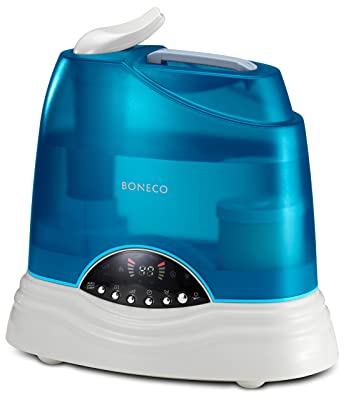
In general, you have to choose between cool mist and warm mist, but this unit from BONECO lets you toggle between both. We consider this to be a major benefit for allergy sufferers as it allows them to discover what they like best. You might even discover that depending on the allergic reaction you are having, you need to switch back and forth between the two.
BONECO designed this unit to make it as low maintenance as possible, using materials that do not allow buildup to develop. It is very quiet, so it is good for rooms where you need to hear television or music, as well as for sleeping. However, you do need to replace the cartridge frequently, which can add up over time.
Honeywell QuietCare Humidifier HCM-6009

The QuietCare from Honeywell is an excellent option for those who want to humidify their entire house but cannot use a whole-house humidifier. It has a 3.4 gallon capacity and can go 24 hours on a single filling depending on the settings you select. It can cover up to 2,300 square feet, making it ideal for the main area in an open floorplan.
Despite being a large model, it is quiet. It is also smaller than most console-style humidifiers, allowing you to hide it away some when in use. It does not come with all the bells and whistles that some models do, but in our opinion, this just makes it easier to use.
PureGuardian H4610
While there are many things that make the PureGuardian unit unique, the most standout feature it offers is its run time. While most single-room humidifiers get about 12-24 hours per fill, this unit can get up to 120. During that time, it regulates itself so you do not need to worry about it.
This unit is completely silent, using ultrasonic technology to create its mist. It also has silver clean protection to reduce the growth of bacteria, viruses, and mold. With three speed settings, you can get exactly what you want from this humidifier.

Aprilaire 700 Automatic Humidifier
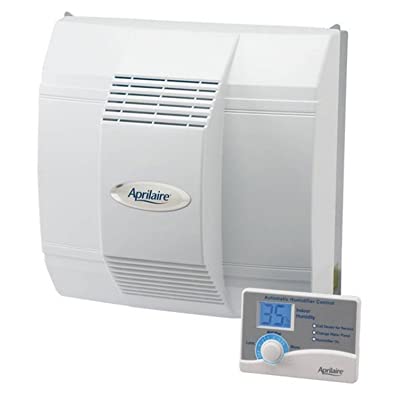
Most humidifiers that are ideal for allergy sufferers are single-room units—as you might have noticed. However, there are whole-house humidifiers that work as well. The Aprilaire 700 is one of them.
This is a flow-through humidifier. This means it does not use tanks and stays very clean, resulting in few irritants in the air. The display is easy to read and use. While it is difficult to install, the results are worth paying a professional to get it done.
Vicks Warm Mist Humidifier
Vicks is a name all allergy sufferers know well. As such, you expect that this humidifier will be great for allergies, and sure enough, it is. This unit uses steam vapor, reaching a temperature that kills bacteria and viruses, as well as neutralizing many allergy triggers.
When the tank is empty, the unit will shut itself off. It will also do so as soon as the humidity level you desire has been reached. You can also adjust the power level to suit different sizes of rooms.
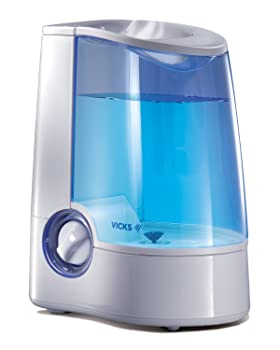
Vornado Ultra3
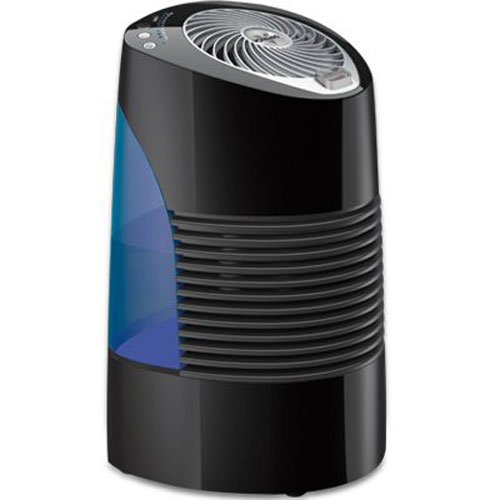
The Vornado Ultra3 is a powerful humidifier with a small footprint, allowing you to place it most anywhere. You can adjust the fan to three different speeds to get the exact output you need. Depending on the settings, it can output two gallons every 24 hours, which means you will need to fill the tank twice a day.
The controls are easy to use and LED lights ensure you can see what is working. Once filled, it takes only a few minutes for the steam to be produced. Finally, it has an interesting look that many will find more aesthetically pleasing than the average humidifier.
Honeywell HE120A Whole House Humidifier
Here we have another whole-house humidifier from Honeywell. This one is a drum style, which does mean you need to keep it very clean to avoid making your allergies worse. However, depending on the setup of your home, drum-style humidifiers may be your only choice.
Unlike many whole-house humidifiers, this one comes with an installation kit. It is an easy install, so you should feel confident doing it yourself. This model works for small and medium-sized homes.
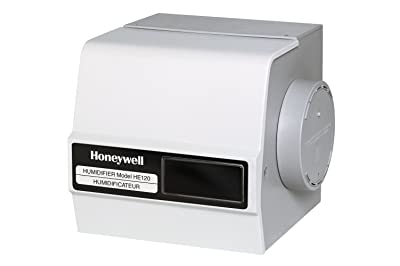
ASOM Cool Mist Humidifier
Finally, we wanted to include a humidifier that is both fun and effective. This model from ASOM has LED lights that change colors as well as an aroma diffuser for your essential oils. The spout can spin 360 degrees, ensuring that you get even discernment no matter where you place the unit.
The mist it emits is light, making it ideal for those who find other humidifiers too heavy. It is also very quiet when on. Ultimately, this is a solid choice for anyone looking for something a little different.
Tips for Dealing with Allergies
While getting a humidifier is a great start to fighting your allergy symptoms, it will not be enough on its own. Instead, think of it as an extra weapon in your battle against allergy discomfort. To further help yourself, use our tips below.
Final Words
If you have allergies, you do not need to simply put up with their symptoms. Instead, you can find ways to cut down on the symptoms, including using a humidifier. All you need to do is purchase the one that is best for you.




